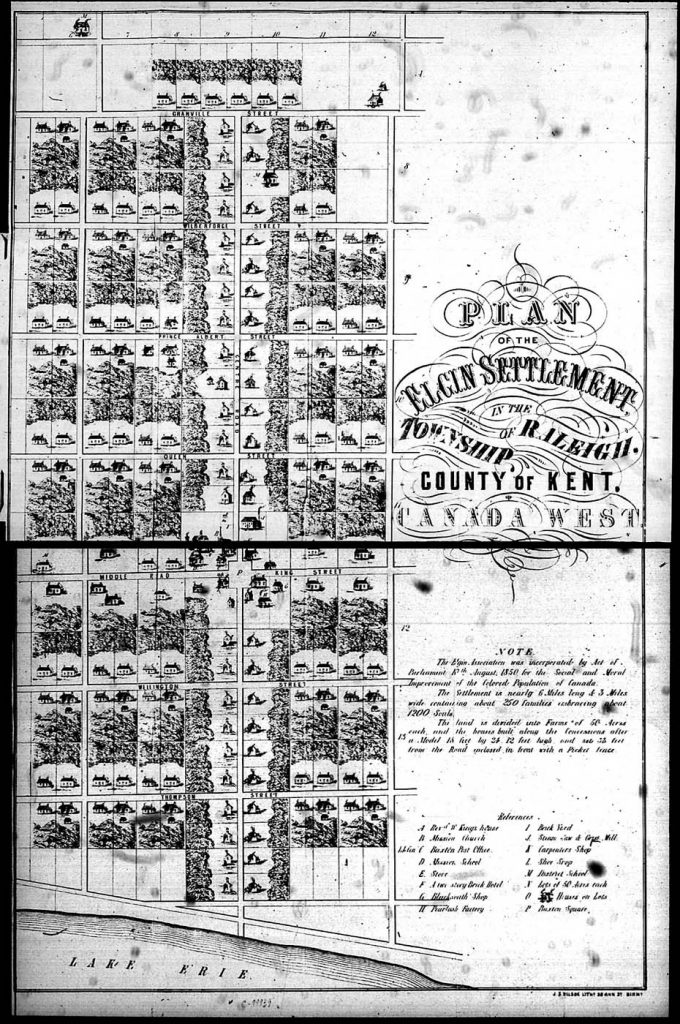In May 1848, William returned to Toronto and was warmly welcomed back by the Presbytery. During his time in Louisiana and on the road back to Canada, William had developed in his own mind the idea of establishing a settlement for both his own and other slaves that had escaped their masters and found freedom in Canada.
“I believed that those persons who had escaped from Slavery, when placed in favourable circumstances, were able to and willing to support themselves and to become respectable members of society and to accomplish that I believed it was necessary to provide them with homes where the parents could support themselves by their own industry and their children with the blessings of a Christian education. Three things were necessary for that end: land, to place their families upon, a Church where they could assemble on Sabbath and hear the Gospel and a day school where the children could receive a good Christian education.”
In June he attended the Synod of the Presbyterian Church of Canada (the “Free Church”) and presented his proposal. The Synod was favourable to the idea and formed a committee including Rev. Dr. Michael Willis and Rev. Dr. Robert Burns, to assist William.
This committee in turn helped form the “Elgin Association” (named in honour of the Governor-General, Lord Elgin) which raised the required sum of $4,000 needed to purchase the 9,000 acres of land near Chatham which was chosen by William as the site for the new settlement. William was named the managing director.
Sadly, the formation of the settlement was not greeted enthusiastically by everyone. There was definite opposition to the plan from a number of settlers already living in the township:
“When it was known that I intended to settle a colony of coloured persons in the Township my popularity fell rapidly. The next time I visited the town I got the cold shoulder, scarcely anyone would speak to me; one man came to me when I was riding down King Street on horseback and told me as a friend that my life was in danger, and that I should not expose myself after dark in the town.”
A “memorial” protesting the formation of the settlement was signed by a number of citizens from the area and a “Committee of Vigilance” was created to follow and report upon William’s actions and the work of the Elgin Association and to draft and send petitions against the settlement to the Parliament. William stood strong against this opposition, and at times risked his life in founding the settlement.
Once the 9,000 acres was purchased, Rev. King worked with the surveyors to partition the land into blocks of 50 acres. These lots were made available only to black settlers, who were required to pay for the land. The cost, however, was low and could be paid off over 10 years. The nucleus of the settlement became William’s own former slaves, who were now offered lots in the centre of the settlement. William himself purchased a 100 acre lot right in the middle and in December 1849, began the mission that he would continue for the next three decades.
Copyright held by The Presbyterian Church in Canada Archives, 2009
If you wish to quote or use any part of this website exhibit, please give credit to the Presbyterian Church in Canada Archives.
